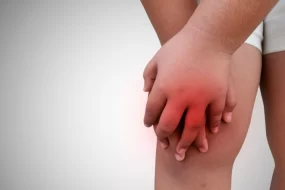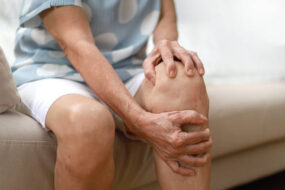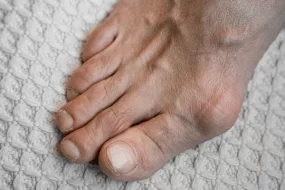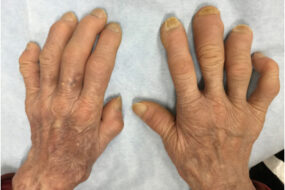- Home
- INTERNAL MEDICINE
- Guillain- Barre syndrome
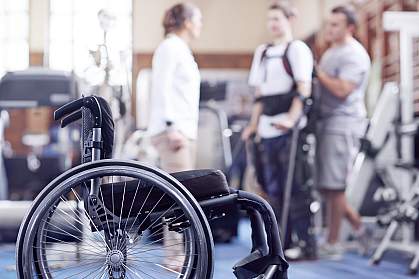
Guillain-Barré Syndrome (GBS) is an acute, immune-mediated, peripheral neuropathy characterized by rapid-onset muscle weakness and, in severe cases, paralysis. The syndrome involves damage to the peripheral nervous system due to an autoimmune attack on the myelin sheath or nerve axons, often following an infection.
Epidemiology
- Incidence: GBS affects approximately 1-2 per 100,000 individuals annually.
- Age and Gender Distribution: It can occur at any age, but the risk increases with age, and males are slightly more affected than females.
- Seasonal and Geographical Variation: Some studies suggest seasonal peaks, often corresponding to infections known to trigger GBS, such as influenza.
Etiology
GBS is typically triggered by an immune response following:
- Infections: Commonly associated with respiratory or gastrointestinal infections, especially Campylobacter jejuni. Other triggers include:
- Viral Infections: Epstein-Barr virus (EBV), Cytomegalovirus (CMV), Zika virus, influenza, HIV.
- Vaccinations: Rarely, vaccines, such as the flu vaccine, can precede GBS onset.
- Surgery or Trauma: Can act as a precipitating factor.
Pathophysiology
- Immune-Mediated Attack: In GBS, the immune system mistakenly targets peripheral nerve components, leading to inflammation and demyelination or axonal damage.
- Molecular Mimicry: The immune response is often thought to be due to molecular mimicry, where antigens from the infectious agent resemble those on the nerve cells, triggering an autoimmune response.
- Types of GBS:
- Acute Inflammatory Demyelinating Polyneuropathy (AIDP): Most common in the West; characterized by demyelination.
- Acute Motor Axonal Neuropathy (AMAN) and Acute Motor-Sensory Axonal Neuropathy (AMSAN): More prevalent in Asia and Latin America, involving axonal damage.
Clinical Presentation
The presentation of GBS can vary but typically includes:
- Progressive Weakness: Usually starts in the legs (ascending paralysis) and may progress to the arms and face. Severe cases can affect respiratory muscles.
- Areflexia or Hyporeflexia: Decreased or absent tendon reflexes.
- Sensory Symptoms: Patients may experience tingling, numbness, or pain in the limbs.
- Autonomic Dysfunction: Can manifest as tachycardia, bradycardia, blood pressure fluctuations, or urinary retention.
Diagnosis
Clinical Evaluation:
- Symmetric weakness with rapid progression (days to weeks).
- Loss of reflexes, particularly in the legs.
- History of preceding infection (50-75% of cases).
Electrophysiological Studies:
- Nerve Conduction Studies (NCS): Demonstrate demyelination (slowed conduction velocity) or axonal damage.
- Electromyography (EMG): Helps assess the extent of muscle involvement.
Cerebrospinal Fluid (CSF) Analysis:
- Elevated protein levels with normal white cell count (albuminocytological dissociation).
- Often detected within the first week of symptom onset.
Antibody Testing:
- Anti-ganglioside antibodies (e.g., anti-GM1, anti-GQ1b) may be present, particularly in AMAN variants.
Differential Diagnosis
- Chronic Inflammatory Demyelinating Polyneuropathy (CIDP): Unlike GBS, CIDP progresses over months.
- Myasthenia Gravis: Characterized by fluctuating muscle weakness.
- Botulism: Causes descending paralysis.
- Spinal Cord Diseases: Such as transverse myelitis or multiple sclerosis.
Treatment
Immunotherapy:
- Intravenous Immunoglobulin (IVIG):
- Administered as a five-day course. Helps neutralize autoantibodies and suppress inflammation.
- Plasma Exchange (Plasmapheresis):
- Removes circulating autoantibodies. Typically given as five sessions over two weeks.
- Note: IVIG and plasmapheresis are equally effective, but combining them offers no additional benefit.
Supportive Care:
- Respiratory Monitoring and Management:
- Up to 30% of patients may require mechanical ventilation due to respiratory muscle weakness.
- Pain Management:
- Neuropathic pain may be treated with medications such as gabapentin or pregabalin.
- Physical and Occupational Therapy:
- To prevent complications like contractures and aid in recovery.
Autonomic Dysfunction Management:
- Monitoring for blood pressure variability and arrhythmias.
- Fluid resuscitation or vasopressors for hypotension.
- Beta-blockers or anticholinergics for tachycardia.
Prognosis
- Recovery Time: Most patients begin to recover within weeks to months, though some may have lingering symptoms for years.
- Factors Influencing Prognosis:
- Age: Older individuals may experience slower recovery.
- Severity of Weakness at Presentation: Severe paralysis or rapid onset suggests a poorer prognosis.
- Electrophysiological Findings: Axonal involvement tends to indicate a more severe course.
- Long-Term Complications:
- Persistent weakness or fatigue.
- Chronic pain.
- Rarely, relapse or chronic neuropathy.
Complications
- Respiratory Failure: Due to paralysis of the diaphragm and intercostal muscles.
- Thromboembolism: Immobilized patients are at risk; prophylactic anticoagulation may be required.
- Pressure Ulcers: Due to prolonged immobility.
- Autonomic Dysfunction Complications: Severe fluctuations in heart rate and blood pressure.
Prevention
- Infection Control: Prompt treatment of respiratory or gastrointestinal infections may reduce the risk.
- Vaccination: Vaccination against influenza is still recommended, as the risk of GBS following influenza is greater than the risk from the vaccine itself.









